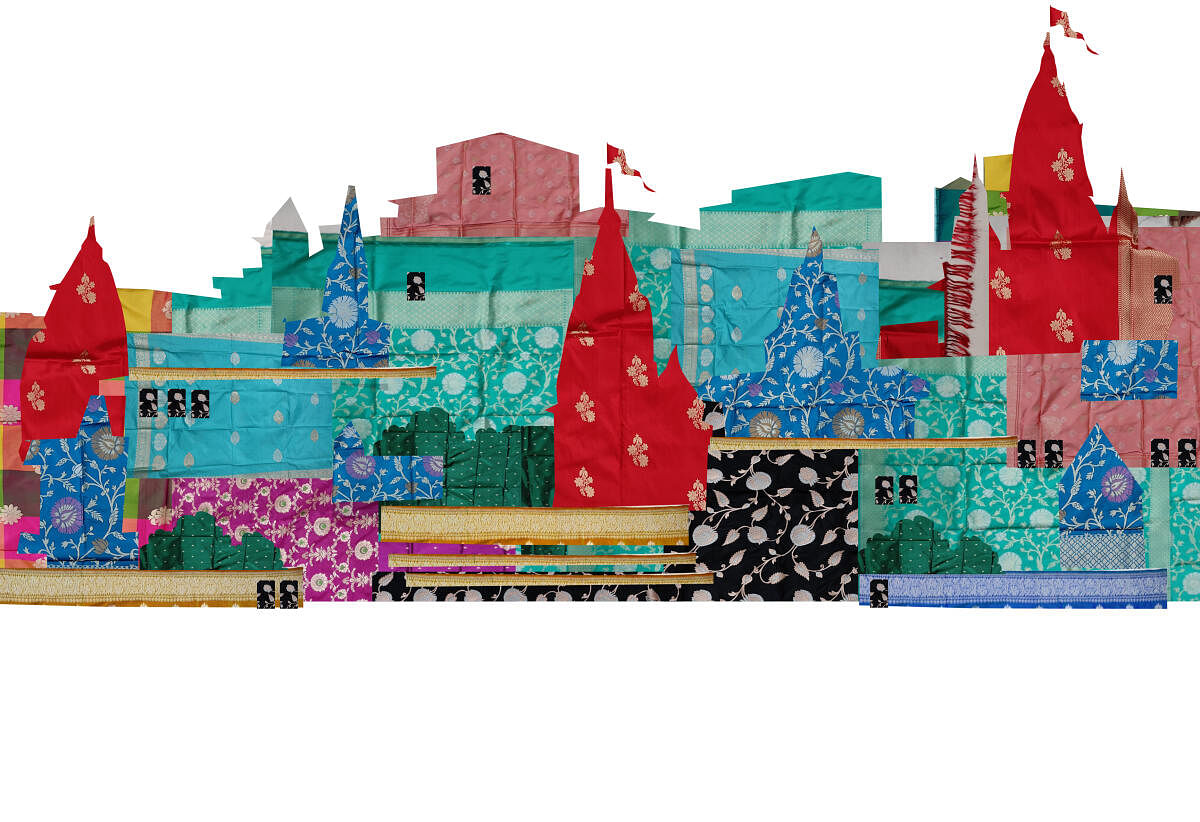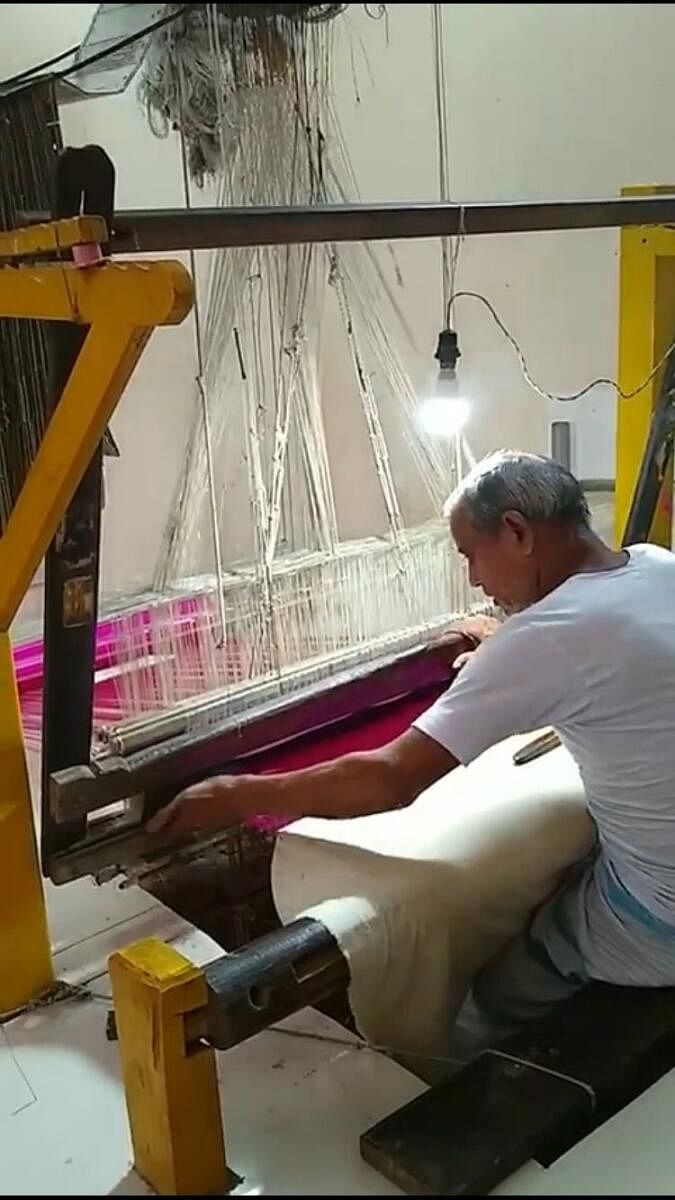

When Guneet Monga took to the stage at the Oscars to accept the Best Documentary (Short Subject) award for her film ‘The Elephant Whisperers’, she wore a pink Banarasi sari. Recently, at the Nita Mukesh Ambani Cultural Centre event in Mumbai, actor Priyanka Chopra was seen in a pre-draped Banarasi sari that was crafted over six months.
Banarasi saris are often worn to mark the biggest occasions. The famed weaves have dominated pop culture, and are frequently favoured by Bollywood actors like Aishwarya Rai and Deepika Padukone. Prime Minister Narendra Modi urged craftsmen in his constituency, Varanasi, to deliver at least 50 of the best Banarasi saris to former First Lady of the United States of America, Michelle Obama, during her 2015 visit to India.
These saris, typically made of silk, have elaborate motifs woven into the cloth using gold or silver threads. Despite their traditional look, they continue to stay relevant, say weaver-trader families from Varanasi.
Naif Ahmed, a sari trader from the Chowk area of Varanasi, tells DH on Saturday, “These saris have seen a rise in demand in recent years, especially post-pandemic, both in India and abroad. Many famous designers are developing new and unique styles by putting a modern spin on the traditional Banarasi designs. We admire it as artists, but as our family has been in this trade for over a century, it irks us a little because we have a purist approach.”
About Banarasi motifs, Naif says that traditional artisans usually choose floral designs that include jasmine, rose, or lotus. “The floral needlework is used to create intricate patterns across the sari, which is our canvas. We then enhance it with beads and more embroidery,” he says. Another common motif is the paisley, also called butti or the mango motif. They are often arranged in rows or patterns across the sari.”
Rigour and craft
Weaving a Banarasi sari can take anywhere from days to months, says Naif. “Regardless of how simple a sari is, it takes at least 15 days to weave it on a traditional handloom. The process involves preparing the silk yarn, dyeing it in the desired colours, and weaving on a handloom.”
Zillur Rahman, a trader of Banarasi saris who comes from a family of weavers, says, “Despite the challenges this industry faces — like low wages to workers, relocation from the old market, and struggle of selling the products outside Varanasi, which imposes additional tax on the saris — many weavers are dedicated to maintaining the historic artform and passing it on to future generations.”
“The younger generation needs a push because they have a lot of career options, and the pay here is low compared to other careers,” points out Zillur. “Power looms have largely replaced the handloom business in Varanasi, but only handwoven saris are true Banarasi saris,” says Zillur.
Symbol of religious harmony
Banarasi saris are known for their rich and diverse heritage. The city is a significant religious site for the Hindus and also has a sizable Muslim population.
The traders in the Chowk area of the city told DH on Saturday that a majority of traders are Hindu but the weavers are mostly Muslim. Hence, the relationship is a symbiotic one, a quintessential example of the Ganga-Jamuni Tehzeeb.
Saquib Khan, a trader from Varanasi’s Maidagin area, says, “Through the sari industry, efforts have been made in recent years to promote Hindu-Muslim unity. Some weavers, for example, have started including Islamic themes and designs into their saris, while others have begun to mix Hindu symbols into traditionally Muslim designs.”
Saquib adds, “The Jamdani sari is a form of Banarasi sari that is particularly connected with Muslim weavers. These saris are made using a time-consuming method that involves weaving small, delicate motifs with extra weft threads.”
The Tanchoi sari, which has a satin weave and a floating weft, and the cutwork sari, which has elaborate cutouts and embroidery, are two prominent Banarasi saris woven by Muslim weavers, says Saquib.
Novel ideas
“Traditional Banarasi saris with heavy borders are popular but there is a growing trend towards sleeker and contemporary designs. Weavers are experimenting with
new colour schemes, abstract layouts, and even Western patterns like polka dots and stripes,” says Naif.
Red, golden, and green are the traditional colours, but today, Banarasi saris are available in pastel, neon, and metallic tones, he adds.
Design tale
The process begins with the design of the motif and selecting the fabric to be used. The motif is drafted on graph paper, and the yarn is pre-washed and dried to eliminate any lingering dust or dirt.
On the loom, the yarn is set up vertically (warp), and threads are woven through it horizontally (weft). The weft is wound around a thread spool and then put onto shuttles. Shuttles are spindle-shaped devices used in textile weaving to carry the weft through the warp. Now, the weaving process commences.
The weaver meticulously threads each shuttle through the warp to make the desired pattern and design. After the weaving is complete, the sari is cut out from the loom and the edges are given a finishing. Washing and starching the sari produces a glossy, wrinkle-free appearance.
The final step in making a sari is adding decorative elements like embroidery, sequins, or beads to increase its allure.
On the choice and sourcing of silk, Zillur says, “Banarasi saris essentially use silk from the region around Varanasi, which is high grade. However, silk from Andhra Pradesh and Tamil Nadu are also used at times.”
Pure silk, katan, organza, and tussar are typically used for Banarasi saris. The pattern is what makes this sari unique, not the type of silk used, he adds.